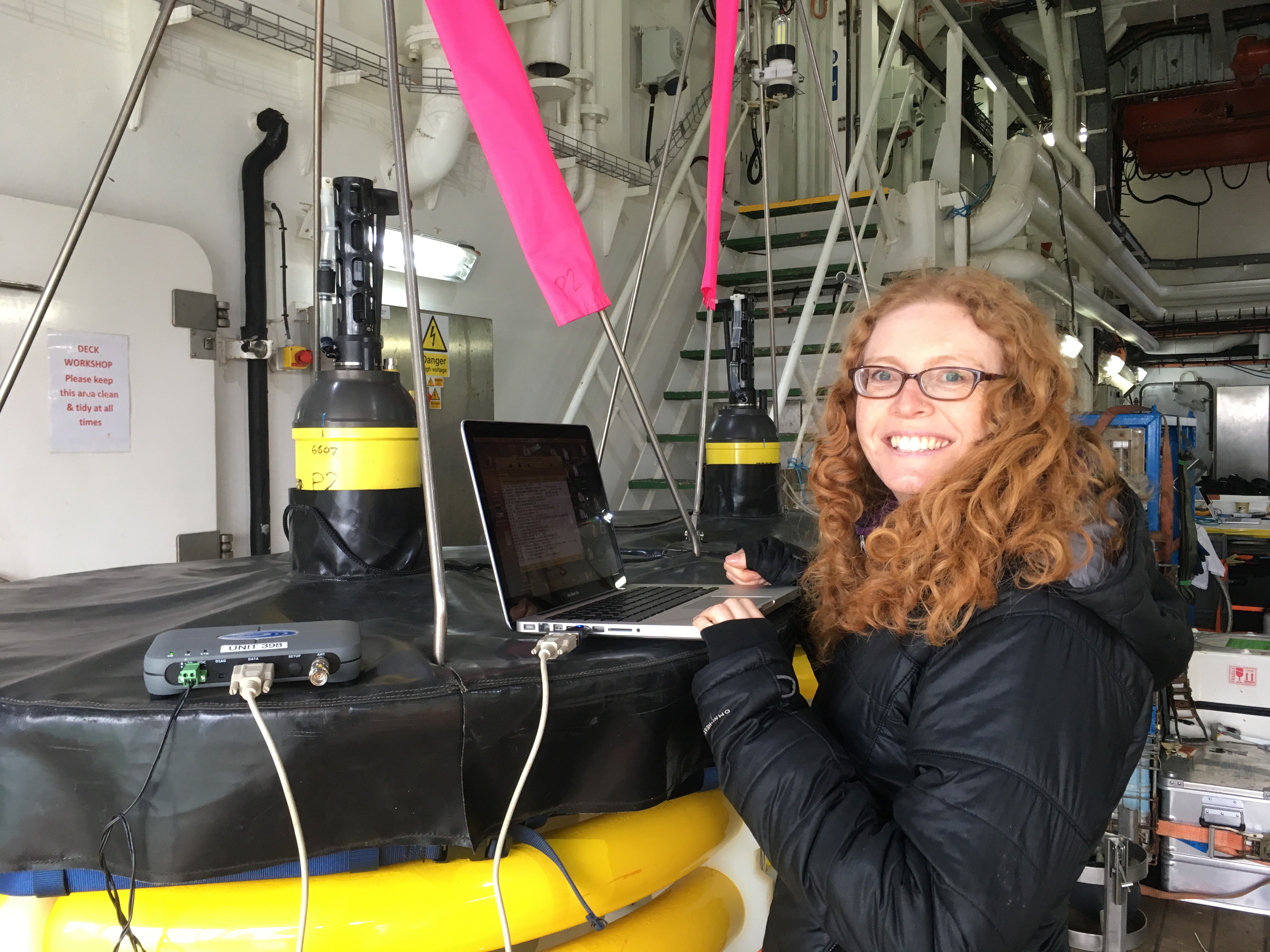The world’s oceans are an important part of life on Earth. It can be thought of as a living body with many processes and functions that help the survival of all life. Many questions surround the different processes that happen in the ocean, and there is still much to learn.
Dr. Stephanie Henson is a Marine Scientist at the National Oceanography Centre (NOC), whose research is aimed specifically at phytoplankton—microscopic plants that live in the ocean. They produce around half of the oxygen in the air that we breathe and take in an abundant amount of carbon dioxide (CO2), which makes them an important part of maintaining the climate on Earth. Dr. Henson’s research focuses on how these microscopic heroes respond to their environment and their particular response to climate change, and the ‘knock-on’ effect on the ocean’s carbon storage.
“The CO2 from the atmosphere is absorbed, and the organic carbon is constantly transformed in the food web during different interactions,” explains Dr. Henson, “this carbon is getting cycled and cycled, around and around, and eventually some of it reaches the deepest parts of our oceans, and this is where it gets very interesting because any carbon that makes it down to the ocean is stored and locked away for thousands of years and this is what keeps the CO2 in our atmosphere considerably less. This process is called the Biological Carbon Pump.”
You may wonder, in an ocean where all these transformations are happening at different times and different speeds—how do scientists measure something so intricate? Dr. Henson explains, “
We have several different ways of measuring it, so the more traditional way is taking samples from a research ship and looking at the shape and size of the particles, and measuring the carbon present. Using that, we can estimate how much carbon is sinking down to the ocean and how efficiently it is transferring into stored carbon at the ocean floor.” Although there are many ways of measuring this, there are also many limitations.
Professor Stephanie Henson aboard the NOC’s research ship, the RRS Discovery. (Image credit: The NOC, Southampton)
“When we go out on research expeditions, we are only out for six weeks at a time, so you can’t really get any idea of how things are changing over the course of the seasons. Just like terrestrial plants, the phytoplankton will change with the season, and you can’t capture those changes during one six-week trip. That temporal variation is important in fully understanding the cycle.”
To better understand these seasonal changes, autonomous vehicles are being used to take measurements over long periods of time. The light scattered back from the particles in the ocean can give us some more data to roughly estimate the potential changes over seasons. New technology is also becoming more widely available, like the ARGO Network. A broad-scale global fleet of robotic profiling floats that measures the temperature and salinity of the upper 2000 meters of the ocean.
Dr. Henson continues, “The ARGO network has been around for decades, and the floats deployed take measurements as they come up to the surface every 10 days. We now have biogeochemical ARGO floats that are equipped with oxygen sensors and scattering sensors that can look at the particles, which has allowed us to slowly increase global coverage of the biogeochemistry that is helping us to resolve changes in space and time.” This new technology is invaluable to finding out the ocean’s role in climate change and although we will need decades of data to pinpoint any specific trends, “we can make important predictions of how things will change.”
There are some theories of how the fluxes could change by looking back in time. “We know that hundreds of thousands of years ago, the oceans contained more iron sourced by the wind from desert regions, and we know that in the past, the phytoplankton were more abundant because of the additional extra iron. We can predict that because of this, the biological storage of carbon was much greater than it is now. We expect that the types of phytoplankton that thrive will change and the types of animals that eat them will change their behavior, so we can make our best predictions based on our understanding of how things are now,” Dr. Henson explains.
“Due to climate change, we expect the phytoplankton will shift to smaller types, which are less nutritious for the animals that eat them, and secondly, these smaller organisms are less likely to form particles that will sink easily, and so the biological carbon flux will reduce.” We depend on the ocean to store a large amount of carbon, and this shift can diminish the amount of carbon that will be stored. This magnifies the urgency of more research to come, especially as Dr. Henson highlights that present research in this particular field is massively under-sampled compared to temperature and salinity.
Having attended the COP26 in Glasgow in 2021, Dr. Henson says there were high hopes and a massive opportunity for countries to assess how they were doing against their climate commitments. The latest science in the IPCC reports that feed into the assessment of the outcomes of future climates were reviewed to generate discussion of possible routes that could be taken to improve our climate, in recognition that “the impact of the climate is becoming way more pronounced and there has been lower resistance among policymakers to addressing climate change.” The emissions gap report published in October 2022 shows that the updated national commitments to reducing emissions will make a negligible difference to the predicted 2023 emissions. In comparison to the Paris Agreement goals set in 2015, there are predictions that global temperatures could surpass 1.5°C to 2.8°C by the end of the century. Dr. Henson explains that for the next generation of marine models in future IPCC reports, we need much more data to pinpoint the most important biological processes.
“We need to narrow down the uncertainties of how climate change will affect the Biological Carbon Pump, and we are at the limits of our data at the moment. All this new technology is super exciting. With more observations, we move to more understanding,” says Dr. Henson. The autonomous vehicles have been in use for the last five to ten years, coinciding with research expeditions to validate observations, and have massively increased the frequency of observations. “The fluxes actually change very quickly, and when using traditional observations, you would never see that.”
When understanding our ocean and the role the biological carbon flux plays in the future of our climate, our limitations are currently driven by a lack of data. However, as we move into the future and autonomous technology advances, we can improve the frequency of data that is collected and, as a result, also improve our understanding.
This feature appeared in Environment, Coastal & Offshore (ECO) Magazine's 2023 Deep Dive I special edition Ocean Observation, to read more access the magazine here.







